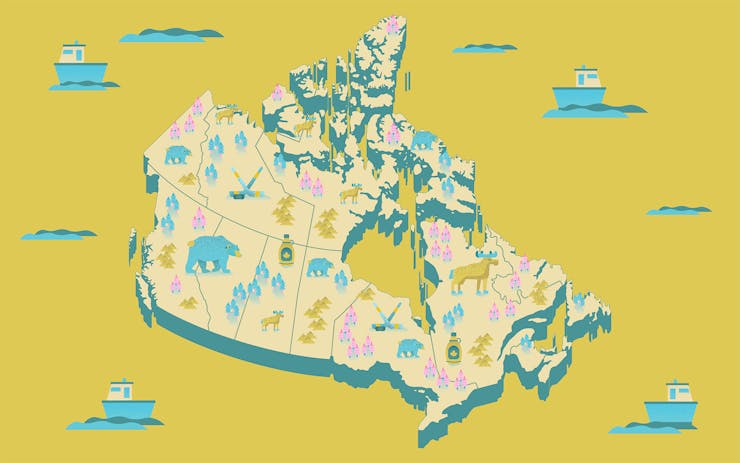From industrial hemp production to prohibition to a string of constitutionality rulings, the history of cannabis in Canada has been a tumultuous journey with many tangents, missteps, and messy revisions to an imperfect law. Let’s take a closer look at the complex and winding road from prohibition to legalization in the True North:
1801: The Lieutenant Governor of Upper Canada distributed hemp seeds to farmers in an effort to stimulate industry.
1822: The provincial parliament of Upper Canada allocated 300 pounds for machinery to process hemp and incentivize domestic hemp producers.
1917: A new machine was invented, making it easier to separate hemp fibre from the internal core, but hemp production dropped off in favour of cotton production, which was less labour-intensive.
1923:Cannabis was deemed illegal in Canada in 1923, after the Narcotics Drug Act Amendment Bill introduced the Act to Prohibit the Improper Use of Opium and Other Drugs, adding cannabis, in addition to opium, cocaine and morphine.
1937: The first marijuana seizure was made by Canadian law enforcement.
1962: Cannabis gained popularity and the number of cannabis convictions escalated from 25 convictions between 1930 and 1946 to 20 cases in 1962 alone.
1968: The number of cannabis convictions jumped up to 2,300 as marijuana use increased, particularly among college students and the hippie psychedelic counterculture.
1969: The Canadian government formed the Royal Commission of Inquiry in the Non-Medical Use of Drugs, known as the Le Dain Commission, to investigate the non-medical uses of cannabis.
1971: The first pro-cannabis smoke-in was held in Vancouver’s Gastown district. Known as the Gastown Riot, or the “Battle of Maple Tree Square,” hundreds of peaceful protesters demonstrated on Water Street before being forcefully dispersed by police officers on horseback.
1972:The Le Dain Commission released a report on cannabis, recommending that the federal government remove criminal penalties for the use and possession of cannabis, although the report did not recommend legalization outright. No steps were taken to decriminalize cannabis.
1996:Terrance Parker is arrested for cannabis possession, cultivation, and trafficking after he was caught growing cannabis to control his epileptic seizures. He appealed to the Canadian Charter of Rights and Freedoms.
2000: The Ontario Court of Appeal ruled that the prohibition of cannabis use infringed on Terrance Parker’s right to life, liberty and security of the person, therefore rendering cannabis prohibition unconstitutional.
2001: The Canadian government enacted the first rendition of the country’s medical marijuana law, the Marihuana for Medical Access Regulations (MMAR), allowing licensed patients to grow their own cannabis or access it from licensed growers.
2003: The Liberal government of Jean Chrétien introduced the first federal marijuana decriminalization measure, reducing the possession of up to 15 grams of cannabis to a civil fine. The bill died, mostly due to pressure from the U.S. Drug Enforcement Administration.
2004: The minority Liberal government of Paul Martin introduced an identical decriminalization measure, but Martin’s government was defeated and the bill died.
2005: City authorities in Vancouver drafted a plan entitled “Preventing Harm from Psychoactive Drug Use” in an attempt to regulate cannabis sales through the Four Pillars Drug Strategy.
2006: Prime Minister Stephen Harper announced a new national anti-drug strategy, imposing mandatory prison sentences on cannabis dealers, and anyone charged with growing more than 500 plants would face a two-year minimum sentence. Maximum penalties for producing cannabis increased from 7 to 14 years in jail.
2011: Justice Donald Taliano ruled that the MMAR and the prohibitions against the possession and production of cannabis were constitutionally invalid and ordered that the government fix the program accordingly.
2013: The government implemented the Marihuana for Medical Purposes Regulations (MMPR), which created a commercially licensed industry for the production and distribution of medicinal cannabis.
2015: Owen Smith, a cannabis baker, was charged with the possession of cannabis-infused cookies. He appealed the charge, and the Supreme Court of Canada ruled that restricting legal access to only dried cannabis flower violated the constitutional rights of medical patients. Licensed producers were now allowed to produce cannabis oils and patients were allowed to possess and alter different forms of cannabis.
2016:Neil Allard challenged the MMPR for suspending personal production licenses from patients, requiring patients to access cannabis solely through licensed producers. The Federal Court of Canada ruled in Allard’s favour, and revised the law yet again with the Access to Cannabis for Medical Purposes Regulations (ACMPR).
2017: The Government of Canada proposed the Cannabis Act, which would legalize the possession, use, cultivation, and purchase of limited amounts of cannabis by adults 18 years of age and older.
2018: The Cannabis Act goes into effect, legalizing cannabis for adult use nationwide.





